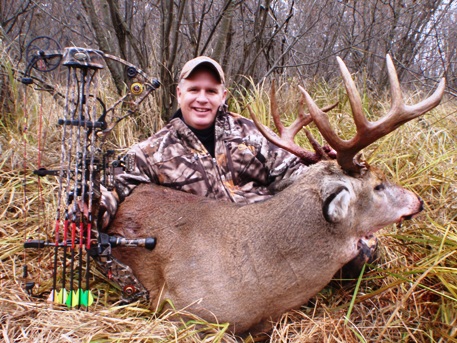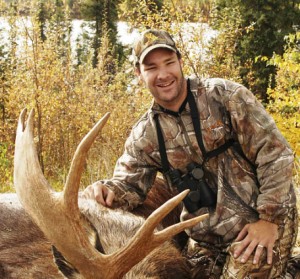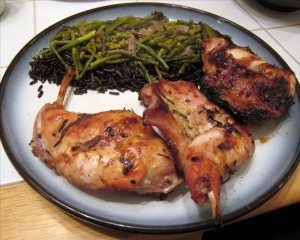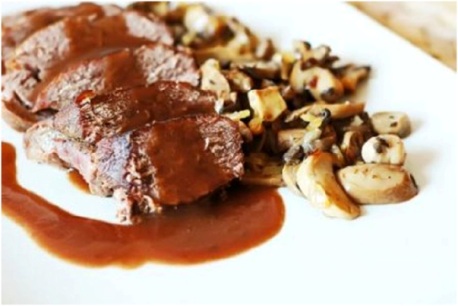Five Tips for Battling Frigid Cold
While Hunting and Fishing
By Steve Sorensen
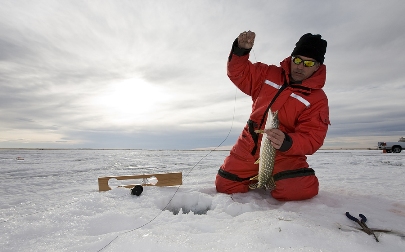 Ready to limber up the bow or muzzleloader for late season whitetail hunts? Dig out the predator calls for some canine calling sessions? Break out the ice fishing gear for a day on the hard water only a few hundred yards from that beach where you soaked up last summer’s sun?
Ready to limber up the bow or muzzleloader for late season whitetail hunts? Dig out the predator calls for some canine calling sessions? Break out the ice fishing gear for a day on the hard water only a few hundred yards from that beach where you soaked up last summer’s sun?
Many outdoorsmen welcome the warmth of the woodstove, but winter’s bad attitude doesn’t mean you have to cower in front of the fireplace. I’ve hunted in temperatures as cold as 26° degrees below zero, and these five rules really paid off for me. They’ll pay off for you too, whatever your winter activity.
Rule #1 – Layer Up
The first rule of keeping warm in winter has a long history, going back way before the new thermally efficient fabrics came on the scene. It’s called “layering”, and it’s effective even if you don’t have Thinsulate® insulation, PolarTec® fleece, or any of the modern hi-tech products.
Your body creates heat, and you want to keep that heat where it will do you some good, so every layer will trap warm air and help prevent its transfer away from your skin. But your body also creates moisture, so put a good moisture-wicking layer next to your skin (you’ll find out the reason for that in Rule #2). Next, add a layer of fleece or very soft wool to trap air. You might want other layers to suit the conditions, but make sure you don’t get bound up like the Michelin® man. Freedom of movement is critical to keeping warm
(see Rule #5).
Rule #2 – Cotton Kills
When you’re dry, it’s hard to beat soft cotton for comfort, but during winter activities your Joe Boxers have no place next to your skin. If you work up a little sweat, cotton never dries out. That’s a prescription for hypothermia, and that’s why people who live and work in Alaska and northern Canada say “cotton kills”.
 I learned the hard way. I once sat shivering on an Alaska mountainside after a vigorous three mile hike. What a mistake! Perspiration soaked my cotton underwear! I was shivering so badly I couldn’t hold my binoculars steady to glass the opposite mountainside for black bears. After a couple of hours thoughts of “the big chill” motivated me to get that waterlogged underwear away from my body, so I pulled down my pants, pulled out my knife, and carefully but hurriedly sliced those icy underpants off (there’s a use for your Havalon knife I’ll bet you never thought of!).
I learned the hard way. I once sat shivering on an Alaska mountainside after a vigorous three mile hike. What a mistake! Perspiration soaked my cotton underwear! I was shivering so badly I couldn’t hold my binoculars steady to glass the opposite mountainside for black bears. After a couple of hours thoughts of “the big chill” motivated me to get that waterlogged underwear away from my body, so I pulled down my pants, pulled out my knife, and carefully but hurriedly sliced those icy underpants off (there’s a use for your Havalon knife I’ll bet you never thought of!).
Rule #3 – Beat the Wind
We hear that lesson over and over when we’re worrying about scent control in warmer weather, but in the dead of winter it means something else. The wind can rob you of precious warmth, whether it’s from exertion or a hot cup of coffee. By wearing a layer the wind can’t penetrate, you’ll keep warm air you’ve trapped in the lower layers right where it does you the most good.
Your wind-breaking layer can double as rain protection by using rain gear that has a laminated waterproof, breathable lining. Make sure it has a zipper with an easy to grab pull tab and it slides down smoothly without snagging other fabrics. A good zipper lets excess heat escape quickly.
Rule #4 – Wear a Good Hat
You lose more heat from the top of your head than you do from any other part of your body. I learned that long ago, but it really sunk in much later when I was petting my dog, Remy. She’s a miniature shorthair dachshund, and she has a hot head. Whether she’s lying in the sun or coming in from a trip to do her dutiful business in the icy outdoors, her head is always the warmest part of her body. I don’t know what it is about brain activity, but even in the dumbest of us, our brains generate lots of heat.
Back when your mother kept telling you to wear a hat even when they were out of style, she knew being fashionable was secondary to keeping warm. So, whether you favor a baseball-style hat, a stocking cap, or a fur-lined trooper style, put a lid on your head.
Rule #5 – Take Advantage of Friction
All of the preceding rules will come to nothing if you don’t make sure you have freedom to move. Movement causes friction, and friction generates heat. That’s why rubbing two sticks together can start a fire. More to the point, that’s what warms your feet when you’re walking.
You can use friction even when you’re standing on the ice or in a tree stand. Wiggle your toes inside your boots. Flex your muscles with isometric exercises. Movements, even small movements, give you a net increase in heat.
Whether your Christmas was a white one or not, it’s likely that by early January the snow is here to stay as Old Man Winter relentlessly blasts us with his arctic jet stream. Don’t let that keep you inside. The more experience you have in cold weather, the more you’ll learn how to generate heat and trap warm air. How about sharing your tips and tricks with other readers in the space below?
About Steve Sorensen…
 Outdoor writer and speaker Steve Sorensen loves the Havalon knife and has been a fan of knives since he was six, when he began begging his dad to take him hunting. His articles have been published in Deer and Deer Hunting, North American Whitetail, Sports Afield, and many other top magazines across the USA. Invite Steve to speak at your next sportsman’s event, e-mail EverydayHunter@verizon.net for information describing his programs and follow his writing at www.EverydayHunter.com.
Outdoor writer and speaker Steve Sorensen loves the Havalon knife and has been a fan of knives since he was six, when he began begging his dad to take him hunting. His articles have been published in Deer and Deer Hunting, North American Whitetail, Sports Afield, and many other top magazines across the USA. Invite Steve to speak at your next sportsman’s event, e-mail EverydayHunter@verizon.net for information describing his programs and follow his writing at www.EverydayHunter.com.
5,623 total views, no views today




